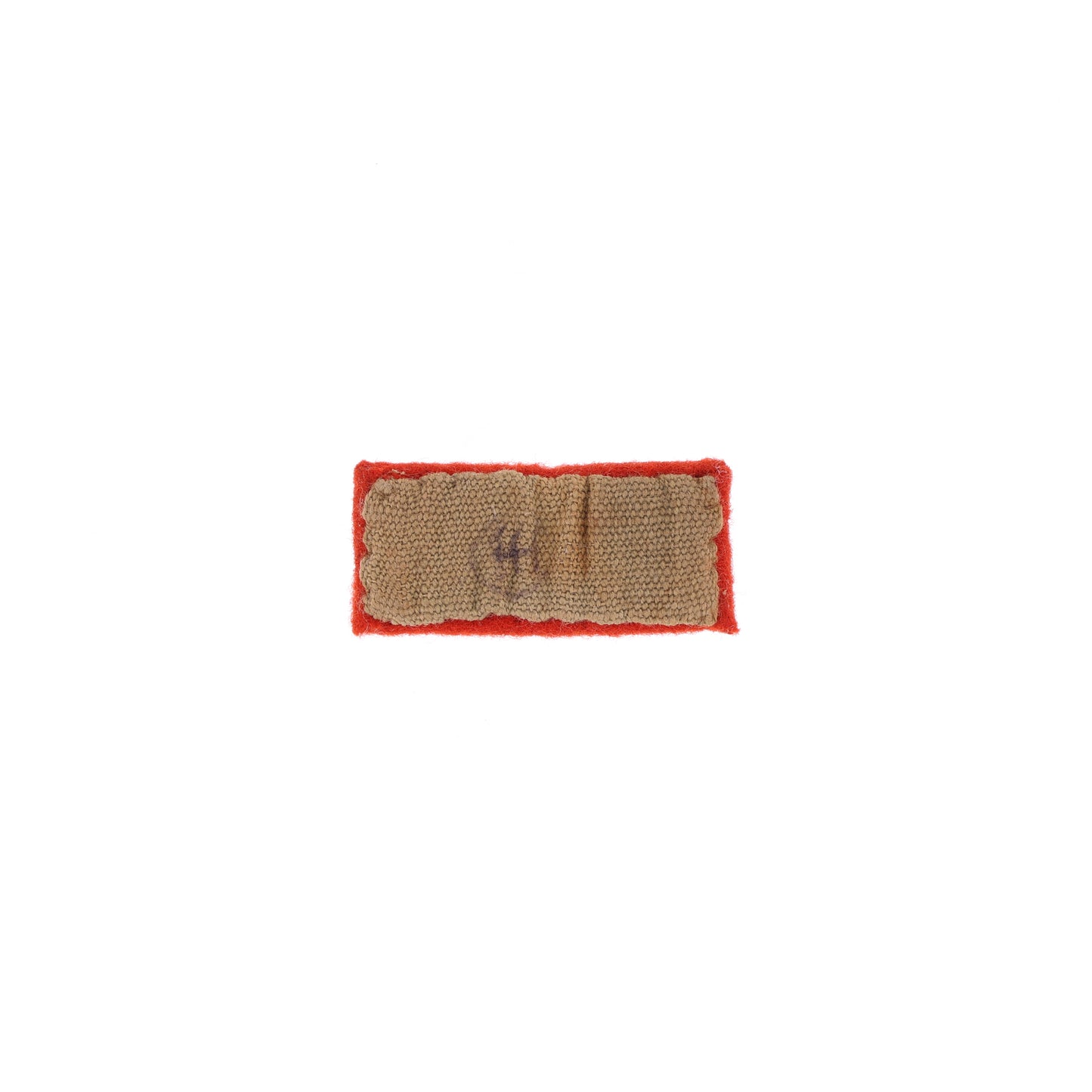WWII Imperial Japanese Army Type 90 Helmet, 2 Type 30 Bayonets for Arisaka Type 99 Rifle, & First Class Private Rank Insignia Patch Recovered by S/Sgt. Marvin W. Ritter (USMC)
WWII Imperial Japanese Army Type 90 Helmet, 2 Type 30 Bayonets for Arisaka Type 99 Rifle, & First Class Private Rank Insignia Patch Recovered by S/Sgt. Marvin W. Ritter (USMC)
Couldn't load pickup availability
International shipping available
International shipping available
Customs duties and taxes may apply.
Ships from: Texas, United States
Taxes not included
Taxes not included
VAT and other taxes are not reflected in the listed pricing.
Authenticity guaranteed
Authenticity guaranteed
All objects offered for sale by Gustafson's are guaranteed authentic. Read more
Description
This is an original WWII U.S. Marine Corps souvenir grouping, consisting of an Imperial Japanese Army Type 90 helmet, two Type 30 bayonets for the Arisaka Type 99 rifle, and a first class private rank insignia patch. These objects were recovered during the Battle of Peleliu in 1944 by Staff Sergeant Marvin W. Ritter, 834661. View the Veteran's Information section for more details regarding S/Sgt. Ritter's life and military service. The helmet was manufactured by Kobe Seikō, as evidenced by the discrete "S" within a diamond stamped into the helmet's interior brim. It showcases its original olive drab finish and five-pointed star badge, denoting use by the Imperial Japanese Army. Interestingly, the helmet appears to have suffered some battle damage, as there is both a split in its brim and a crack near the crown. The interior retains its original three-pad leather liner and chinstrap remnants. During the war, it was common for souvenir-hunting Marines to sever the chinstraps on the helmets of the Japanese soldiers they killed in battle. The front liner pad is inscribed in kanji with the name of its original owner, "柴, 田, 武", or "Shibata Takeshi", which roughly translates to "Brushwood/Ricefield Warrior". The first bayonet, with a curved cross guard and no arsenal stampings, is actually a school bayonet used for military drill which was standard high school curriculum in Japan from the early-1930s until the end of the war. It comes complete with its original scabbard and leather frog. The small leather tag tied to the frog is also inscribed with its original owner's name, an apparent "宮, 尾", or "Miyao", roughly translating to "Shrine". The tag's reverse is marked "ニ, 六", or "26". The second bayonet was manufactured by Matsushita Kinzoku KK (Matsushita Metalworking Corp.), under supervision by the Tokyo Kokura Army Arsenal, as evidenced by the arrow-struck "M" stamping, preceded by the interlaced Kokura Army Arsenal logo. Its pommel is faintly marked with kanji and the apparent serial number of "24137". It also comes complete with its original scabbard and leather frog. After the war, a label was applied to the scabbard reading "TAKEN AT PELELIU 1944 BY S/SGT MARV RITTER USMC". Lastly, the rank insignia patch consists of two yellow stars stitched to a red felt backing, denoting use by a first class private in the Imperial Japanese Army.
Provenance
Personal Collection of Joshua Murray, Stevens Point, Wisconsin
Condition Report
These objects are in good, well used condition. The leather components exhibit some damage, and the helmet's state is typical of KIA-recoveries; however, the bayonets' blades are in remarkably good condition, with no evidence of sharpening.
Veteran's Information
Marvin W. Ritter was born on September 17, 1923, in Chicago, Illinois. He enlisted in the U.S. Marine Corps on March 15, 1943. His service began as a private in the Tenth Recruit Battalion at the Marine Corps Base in San Diego, California. Then in July of 1943, Ritter joined the First Radar Company, Signal Battalion at Camp Lejeune in New River, North Carolina. As a member of the I Marine Amphibious Corps, Ritter arrived in Nouméa, New Caledonia in January of 1944 as a private first class. In July of that same year, Ritter joined the 8th 155mm Gun Battalion, III Amphibious Corps. It was with this unit that Ritter participated in the Battle of Peleliu and subsequently acquired these souvenirs. Ritter survived the war and returned to San Diego, California aboard the USS Adair (APA-191) on November 11, 1945. Interestingly, as of this date, he was still listed in the Muster Rolls as a private first class, potentially indicating continued service after the war. He died on January 27, 2007, at the age of 83 and is buried at Elm Lawn Memorial Park in Elmhurst, Illinois. Made available to the new owner below are Ritter's USMC Muster Rolls, obituary, and gravesite. At Gustafson's request, the National Archives is currently processing Ritter's Official Military Personnel File, which will soon be made available below.
- USMC Muster Rolls
- Obituary
- Gravesite
- Official Military Personnel File (Coming Soon)
Share




































































